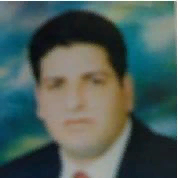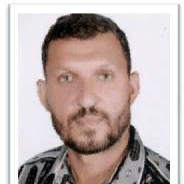International Journal of Image, Graphics and Signal Processing (IJIGSP)
IJIGSP Vol. 5, No. 3, 8 Mar. 2013
Cover page and Table of Contents: PDF (size: 585KB)
A Novel Approach for MRI Brain Images Segmentation
Full Text (PDF, 585KB), PP.10-18
Views: 0 Downloads: 0
Author(s)
Index Terms
Thresholding, Magnetic resonance images, Medical image, Histogram, Fisher information measure, Entropy
Abstract
Segmentation of brain from magnetic resonance (MR) images has important applications in neuroimaging, in particular it facilitates in extracting different brain tissues such as cerebrospinal fluids, white matter and gray matter. That helps in determining the volume of the tissues in three-dimensional brain MR images, which yields in analyzing many neural disorders such as epilepsy and Alzheimer disease. The Fisher information is a measure of the fluctuations in the observations. In a sense, the Fisher information of an image specifies the quality of the image. In this paper, we developed a new thresholding method using the Fisher information measure and intensity contrast to segment medical images. It is the weighted sum of the Fisher information measure and intensity contrast between the object and background. This technique is a powerful method for noisy image segmentation. The method applied on a normal MR brain images and a glioma MR brain images. Experimental results show that the use of the Fisher information effectively segmented MR brain images.
Cite This Paper
Abo-Eleneen Z. A, Gamil Abdel-Azim,"A Novel Approach for MRI Brain Images Segmentation", IJIGSP, vol.5, no.3, pp.10-18, 2013. DOI: 10.5815/ijigsp.2013.03.02
Reference
[1]Atkins M. S., Mackiewich B. T. Fully automatic segmentation of the brain in MRI. IEEE Transactions on Medical Imaging, 1998, 17 (1), pp. 98-107.
[2]Sezgin M., Sankur B. Survey over image thresholding techniques and quantitative performance evaluation. Journal of Electronic Imaging, 2004, 13 (1), 146–165.
[3]Gonzalez R. C., Woods R. E. Digital Image Processing, Publishing House of Electronics Industry, Beijing, 2002.
[4]Pham D. L., Xu C., Prince J. L. Current methods in medical image segmentation. Annu. Rev. Biomed. Eng., 2000, 2:315-337.
[5]Mallat S., Zhong S. Characterization of Signals from Multiscale Edges," IEEE Trans. on Pattern Analysis and Machine Intelligence, 1992, 14:710- 732.
[6]Zhang Y. A survey of evaluation methods for image segmentation." Pattern Recogn., 1996, 29,1335-1346.
[7]Saha P. K., Udupa J. K. Optimum image thresholding via class uncertainty and region homogeneity. IEEE Trans Pattern Anal Mach Intell., 2001, 23: 689–706.
[8]Glasbey C. A. , An analysis of histogram-based thresholding algorithms, CVGIP: Graphical Models and Image Processing, 1993, 55 (6): 532–537.
[9]Sahoo P. K., Soltani S. , Wong A. K. C., Y.C. Chen Y. C. A survey of thresholding techniques, Computer Vision, Graphics, and Image Processing. 1988, 41 (2): 233–260.
[10]Trier Ø. D., Jain A.K. Goal-directed evaluation of binarization methods, IEEE Transactions on Pattern Analysis and Machine Intelligence, 1995, 17 (12): 1191–1201.
[11]Chang C. I., Du Y., Wang J. , Guo S. M., Thouin P.D. Survey and comparative analysis of entropy and relative entropy thresholding techniques, Vision, Image and Signal Processing, IEE Proceedings, 2006, 153: 837 – 850.
[12]Otsu N., A threshold selection method from gray-level histogram, IEEE Transactions on Systems Man and Cybernetics, 1978, 8:62–66.
[13]Kittler J., Illingworth J., Minimum error thresholding, Pattern Recognition, 1986, 19 (1): 41–47.
[14]Cho S., Haralick R., Yi S. Improvement of Kittler and Illingworth's minimum error thresholding, Pattern Recognition, 1989, 22 (5): 609–617.
[15]Li Z., Liu C., Liu G., Cheng Y., Yang X., Zhao C. A novel statistical image thresholding. Int J Electron Commun. 2011, 64:1137–1147.
[16]Qiao Y., Hu Q., Qian G., Luo S., Nowiniski W. L. Thresholding based on variance and intensity contrast. Pattern Recognition, 2007, 40:596–608.
[17]Abdel- Azim G., Abo-Eleneen Z. A., Thresholding based on Fisher linear discriminant. Journal of Pattern Recognition Research, 2011, 2: 326-334.
[18]Lee S. U., Chung S. Y. , Park R. H., A comparative performance study of several global thresholding techniques for segmentation', Comput. Vis. Graph. Image Process., 1990, 52: 171–190.
[19]Sahoo P. K., Slaaf D. W., Albert T. A. Threshold selection using a minimal histogram entropy difference Opt. Eng., 1997, 36: 1976–1981.
[20]R´enyi A. On measures of entropy and information. In Proc. 4th Berkeley Sympos. Math. Statist. and Prob., Vol. I, pages 547–561. Univ. California Press, Berkeley, Calif., 1961.
[21]Pun T. A new method for grey-level picture thresholding using the entropy of the histogram, Signal Process. 1980, 2: 223–237
[22]Pun T. Entropic thresholding: a new approach Comput. Graph. Image Process. 1981, 16:210– 239
[23]Kapur J. N., Sahoo P. K., Wong A. K. C. A new method for gray level picture thresholding using the entropy of the histogram, Comput. Vision Graphics Image Process. 1985, 29: 273–285.
[24]Abutaleb A. S., Automatic thresholding of gray-level pictures using two-dimensional entropies, Pattern Recognition. 1989, 47: 22–32.
[25]Brink A. D. Thresholding of digital images using two-dimensional entropies, Pattern Recognition. 1992, 25: 803–808.
[26]Li, C. H., Lee C. K., Minimum cross entropy thresholding, Pattern Recognition,1993, 26:617–625.
[27]Cheng H. D., Chen J. R., Li J. G., Threshold selection based on fuzzy c-partition entropy approach, Pattern Recognition, 1998, 31:857–870.
[28]Suzuki H. , Toriwaki J. Automatic segmentation of head MRI images by knowledge guided thresholding. Comput Med Imaging Graph, 1991, 15(4):233.
[29]Robb R. A., Biomedical imaging, visualization, and analysis, edited by Wiley-Liss, USA, 2000.
[30]Wells W. M., Grimson W. E, L., Kikinis R., F. Jolesz A. Adaptive segmentation of MRI data, IEEE Transactions on Medical Imaging, 1996, 15:429–442.
[31]Leemput K. V., Maes F., Vandermeulen, P.Suetens, Automated model-based tissue classification of MR images of the brain, IEEE Transactions on Medical Imaging, 1999, 18:897–908.
[32]Hall L. O., Bensaid A. M., Clarke L. P., Velthuizen R. P., Silbiger M. S., Bezdek J. C. A comparison of neural network and fuzzy clustering techniques in segmenting magnetic resonance images of the brain, IEEE Transactions on Medical Imaging, 1992, 3:672–682.
[33]Li C. L., Goldgof D. B., Hall L. O. Knowledge based classification nd tissue labeling of MR images of human brain, IEEE Transactions on Medical Imaging, 1993, 12:740–750.
[34]Frieden B. R. Science from Fisher information: a unification; Cambridge University Press: Cambridge, UK, 2004.
[35]Fisher R. A.. Theory of statistical estimation. Proc. Cambridge Phil. Soc., 1925, 22:700-725.
[36]Cover T. M., Thomas J .A. Elements of Information Theory. Wiley, N.Y., 1991.
[37]Martin M. T., Pennini F., Platino A. Fisher's information and the analysis of complex signals. Physics Letters A. 1999, 256: 173-180.
[38]Dehesa J.S., Yanezz R.J., Alvarez –Nodarsex R., P. anchez-Morenoy S. P. Information-theoretic measures of discrete orthogonal polynomials. Journal of Difference Equations and Applications, 2004: 1-17.
[39]Hou Z., Hu Q., Nowinski W.L. On minimum variance thresholding, Pattern Recognition Lett. 2006, 27:1732– 1743.
[40]Besese J. H., Cranial MRI. A teaching File Approach. MeGraw-Hill. International Education. Medical Series, 1991.

